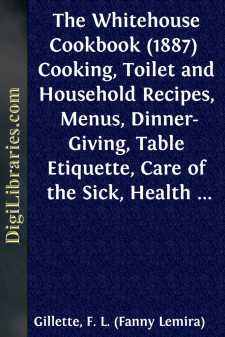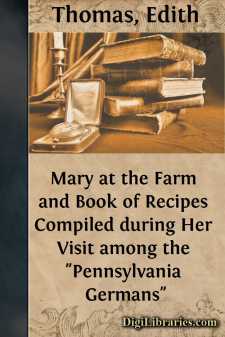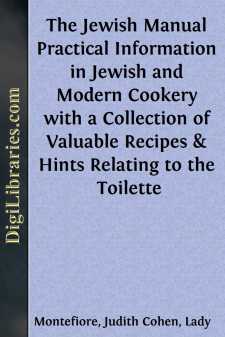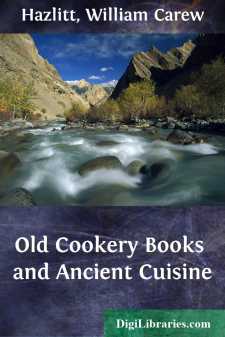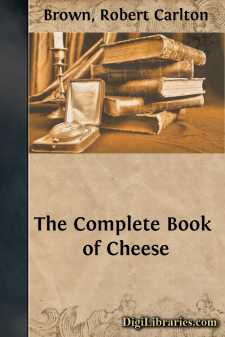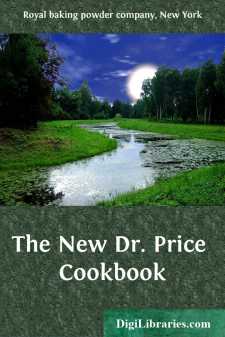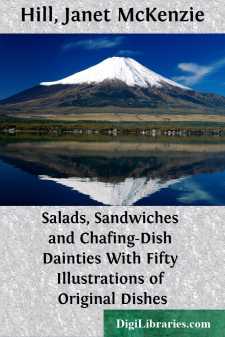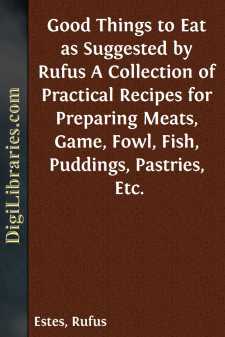Categories
- Antiques & Collectibles 13
- Architecture 36
- Art 48
- Bibles 22
- Biography & Autobiography 813
- Body, Mind & Spirit 142
- Business & Economics 28
- Children's Books 15
- Children's Fiction 12
- Computers 4
- Cooking 94
- Crafts & Hobbies 4
- Drama 346
- Education 46
- Family & Relationships 57
- Fiction 11828
- Games 19
- Gardening 17
- Health & Fitness 34
- History 1377
- House & Home 1
- Humor 147
- Juvenile Fiction 1873
- Juvenile Nonfiction 202
- Language Arts & Disciplines 88
- Law 16
- Literary Collections 686
- Literary Criticism 179
- Mathematics 13
- Medical 41
- Music 40
- Nature 179
- Non-Classifiable 1768
- Performing Arts 7
- Periodicals 1453
- Philosophy 64
- Photography 2
- Poetry 896
- Political Science 203
- Psychology 42
- Reference 154
- Religion 513
- Science 126
- Self-Help 84
- Social Science 81
- Sports & Recreation 34
- Study Aids 3
- Technology & Engineering 59
- Transportation 23
- Travel 463
- True Crime 29
The Whitehouse Cookbook (1887) Cooking, Toilet and Household Recipes, Menus, Dinner-Giving, Table Etiquette, Care of the Sick, Health Suggestions, Facts Worth Knowing, Etc., Etc. The Whole Comprising a Comprehensive Cyclopedia of Information...
Description:
Excerpt
CARVING.
Carving is one important acquisition in the routine of daily living, and all should try to attain a knowledge or ability to do it well, and withal gracefully.
When carving use a chair slightly higher than the ordinary size, as it gives a better purchase on the meat, and appears more graceful than when standing, as is often quite necessary when carving a turkey, or a very large joint. More depends on skill than strength. The platter should be placed opposite, and sufficiently near to give perfect command of the article to be carved, the knife of medium size, sharp with a keen edge. Commence by cutting the slices thin, laying them carefully to one side of the platter, then afterwards placing the desired amount on each guest's plate, to be served in turn by the servant.
In carving fish, care should be taken to help it in perfect flakes; for if these are broken the beauty of the fish is lost. The carver should acquaint himself with the choicest parts and morsels; and to give each guest an equal share of those tidbits should be his maxim. Steel knives and forks should on no account be used in helping fish, as these are liable to impart a very disagreeable flavor. A fish-trowel of silver or plated silver is the proper article to use.
Gravies should be sent to the table very hot, and in helping one to gravy or melted butter, place it on a vacant side of the plate, not pour it over their meat, fish or fowl, that they may use only as much as they like.
When serving fowls, or meats, accompanied with stuffing, the guests should be asked if they would have a portion, as it is not every one to whom the flavor of stuffing is agreeable; in filling their plates, avoid heaping one thing upon another, as it makes a bad appearance.
A word about the care of carving knives: a fine steel knife should not come in contact with intense heat, because it destroys its temper, and therefore impairs its cutting qualities. Table carving knives should not be used in the kitchen, either around the stove, or for cutting bread, meats, vegetables, etc.; a fine whetstone should be kept for sharpening, and the knife cleaned carefully to avoid dulling its edge, all of which is quite essential to successful carving.
BEEF.
HIND-QUARTER.
No. 1. Used for choice roasts, the porterhouse and sirloin steaks.
No. 2. Rump, used for steaks, stews and corned beef.
No. 3. Aitch-bone, used for boiling-pieces, stews and pot roasts.
No. 4. Buttock or round, used for steaks, pot roasts, beef á la mode; also a prime boiling-piece.
No. 5. Mouse-round, used for boiling and stewing.
No. 6. Shin or leg, used for soups, hashes, etc.
No. 7. Thick flank, cut with under fat, is a prime boiling-piece, good for stews and corned beef, pressed beef.
No. 8. Veiny piece, used for corned beef, dried beef.
No. 9. Thin flank, used for corned beef and boiling-pieces.
FORE-QUARTER.
No. 10. Five ribs called the fore-rib. This is considered the primest piece for roasting; also makes the finest steaks.
No. 11. Four ribs, called the middle ribs, used for roasting....


